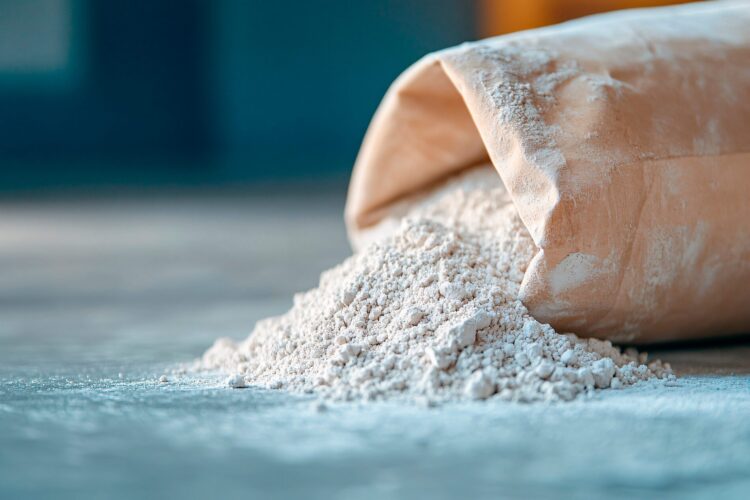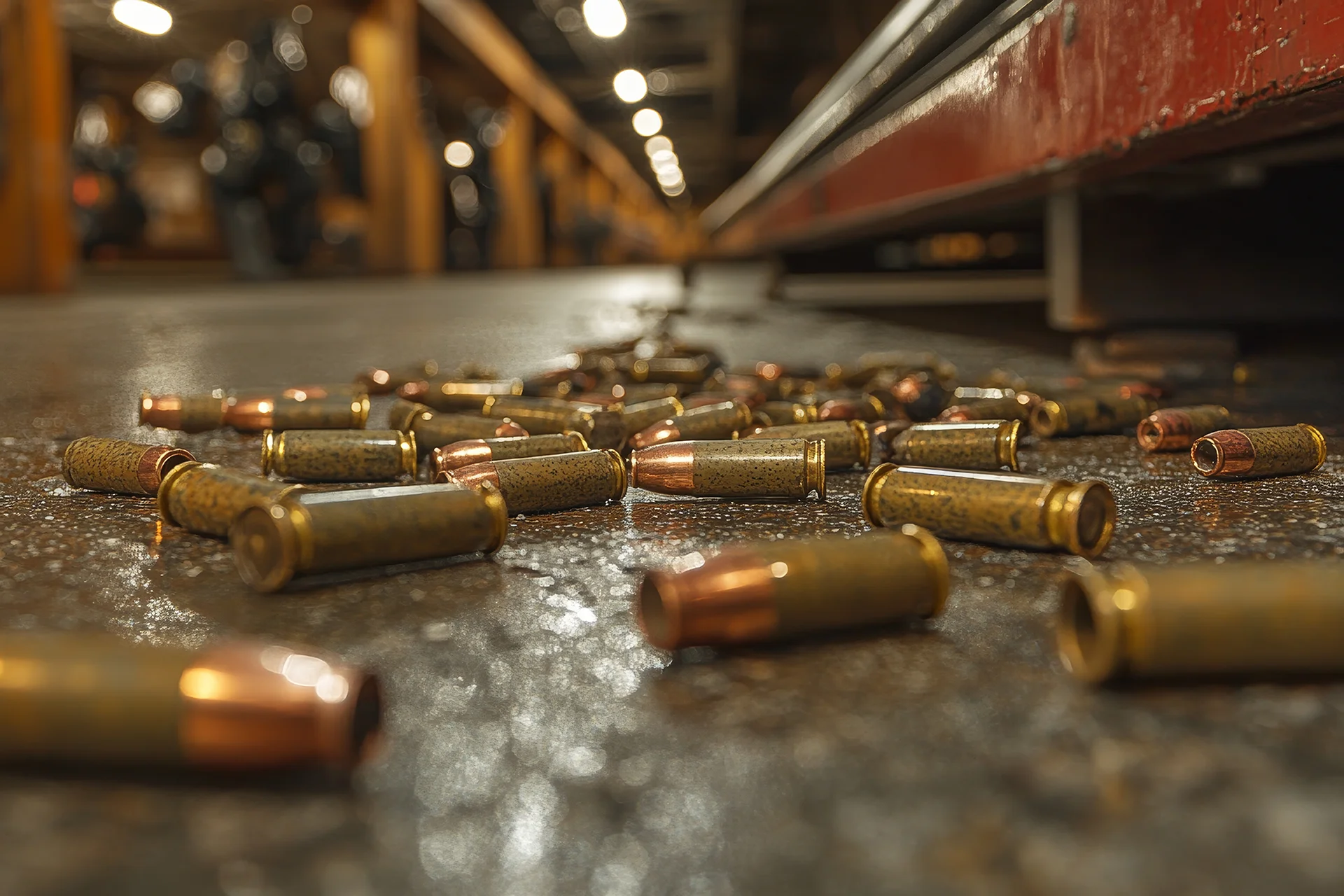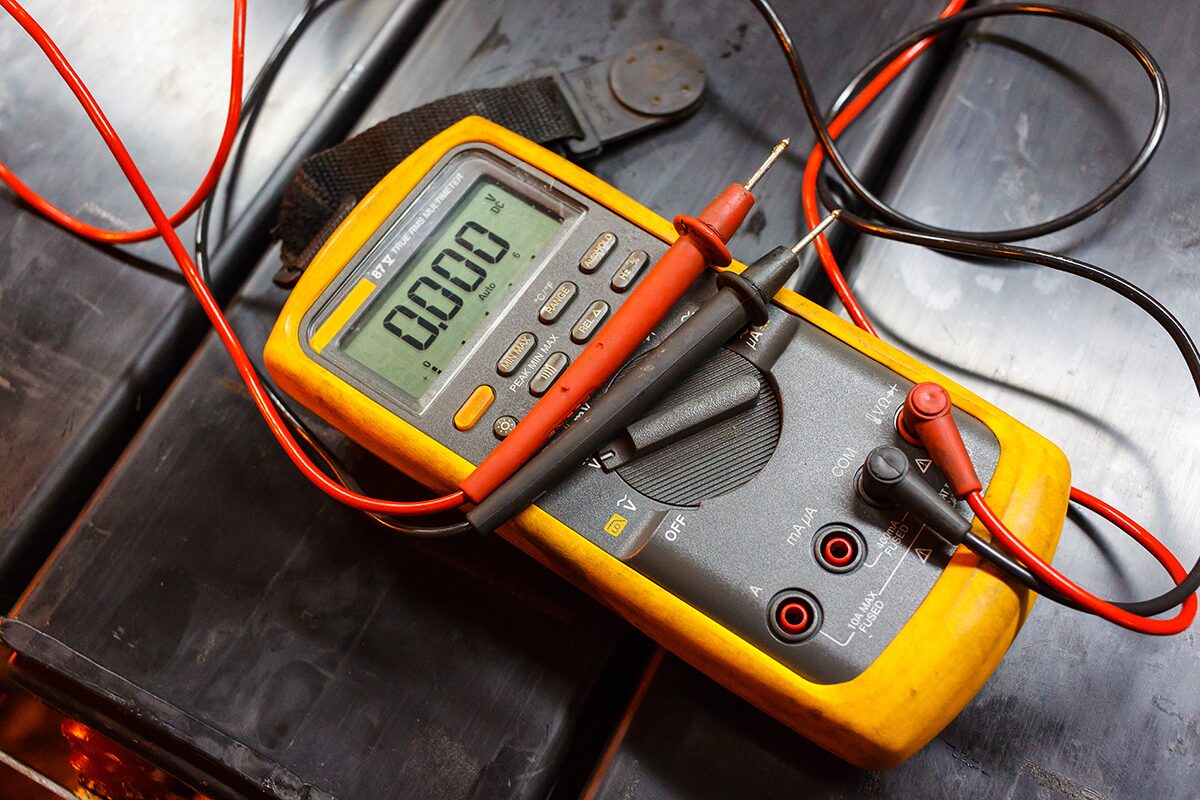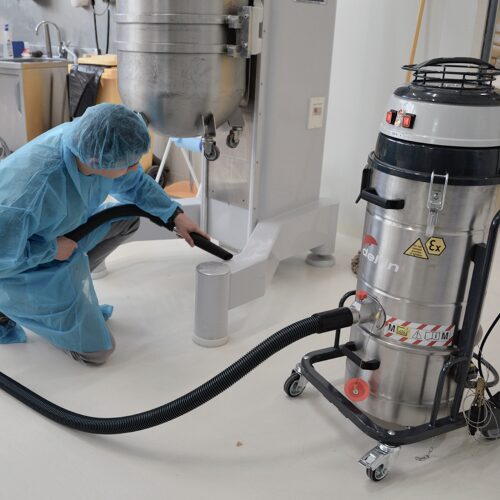Can I use a regular vacuum cleaner for combustible dust – or does it require more?
Imagine you’re working in a packaging room or a laboratory, and suddenly there’s a spill of sugar, flour, or a pharmaceutical powder. You grab the vacuum cleaner as usual – but then you pause. Are you actually allowed to use it for combustible dust? It may seem like a simple question, but the answer is far from straightforward.
And this is where vacuum cleaners specifically designed and tested for combustible dust (ACD or ATEX) come into play. This article helps you understand when a regular vacuum is insufficient, what ACD really means, and when you instead need ATEX-certified equipment with documented Zone 20 safety.
Combustible Dust and the Invisible Risk
Many materials we consider harmless in everyday life can, in powdered form, actually be potentially explosive. This includes substances such as starch, sugar, cocoa powder, flour, lactose, and a wide range of APIs. When these materials become fine dust and are dispersed into the air, they can create an explosive atmosphere – especially if there is an ignition source nearby.
The problem is that this risk doesn’t only exist in obvious ATEX zones with flashing warning lights. It can also arise inside the vacuum cleaner itself, where air, dust, and moving parts come together. Many standard industrial vacuum cleaners lack the necessary protection against sparks, hot surfaces, or static electricity. And that’s exactly why using a regular vacuum cleaner for combustible dust can, in practice, be dangerous – and in some cases, outright illegal.
What exactly is an ACD vacuum cleaner?
ACD stands for Appliance for Combustible Dust. It is not a certification scheme, but a technical designation used in the IEC 60335-2-69 standard for vacuum cleaners designed to safely handle combustible dust in areas that are not classified as ATEX zones.
In practice, this means the vacuum cleaner is built to avoid igniting dust inside the container – even if an explosive atmosphere should form there. This requires, among other things, proper dissipation of static electricity, the use of conductive materials, and a safe multi-stage filtration setup.
For a vacuum cleaner to be considered suitable for combustible dust outside ATEX zones, it should be able to discharge static electricity effectively – not just through a grounding wire, but with a controlled and measurable resistance. In practice, this means the vacuum should have a conductive connection with a total resistance to earth of less than 10⁶ Ohms, which should be documented. Likewise, hoses, containers, and couplings should be antistatic or conductive, depending on their design.
Material selection is also crucial. Many ACD vacuum cleaners are built using stainless steel or specially coated metals, precisely because certain other types of steel – and especially aluminum – can produce sparks upon impact. Stainless steel, on the other hand, has a low risk of sparking and provides a safer construction.
The filtration system must consist of at least two levels: a main filter that captures the majority of the dust, and a safety filter that protects the motor and surroundings from fine and potentially reactive dust. In many cases, a HEPA filter is used as the safety filter, especially when the vacuum cleaner must meet both health and explosion-related requirements. However, HEPA is not an absolute requirement, but it is often chosen in practice to ensure a high retention rate.
In addition, the equipment must not develop surface temperatures that exceed the ignition point of the dust. In practice, this means the vacuum cleaner must be tested for maximum temperature development during operation. Many ACD models are classified, for example, as T135°C, which means that no external or internal surface may exceed this temperature. This is especially important when vacuuming very fine and easily ignitable dust.
What does the marking mean – and what should you look for?
ACD is not an official ATEX certification, and therefore there is no standardized ACD marking that is legally binding. Some manufacturers may indicate technical data such as maximum surface temperature (e.g., T135 °C) and electrical dissipation, but without the “Ex” marking, as this requires an ATEX certificate.
If you need equipment with documented Zone 20 approval (Category 1D), you should choose a vacuum cleaner with full ATEX marking, for example:Ex II 1/3D Ex h IIIC T160°C Da/Dc
This indicates that the equipment is approved for use both in classified areas (external Zone 22) and for handling explosive atmospheres internally – certified by a Notified Body according to EN 17348.
What does “Da” mean?
It indicates that the equipment may be used in Zone 20 – that is, areas where an explosive atmosphere is continuously or frequently present. In practice, this means that the vacuum cleaner is built with a particularly high level of safety, and that its internal components are protected against ignition even under unfavorable conditions.
There are three EPL (Equipment Protection Level) levels for dust:
Da – Very high level of protection
→ Suitable for Zone 20 (continuous or frequent presence of explosive dust atmosphere)
Db – High level of protection
→ Suitable for Zone 21 (occasional presence)
Dc – Enhanced level of protection
→ Suitable for Zone 22 (rare and brief presence)
Only vacuum cleaners with full ATEX certification from a Notified Body may be marked with “Da”. ACD equipment cannot use this marking unless it is ATEX-certified according to EN 17348.
When does it make sense to choose an ACD vacuum cleaner?
ACD vacuum cleaners are designed specifically for situations where you are working with combustible dust, but not in a classified ATEX zone. This could be in cleanroom corridors, technical rooms, packing areas, laboratories, or production zones where spills occur occasionally and are quickly cleaned up.
The key point is that the dust must not be allowed to form persistent clouds in the air, and there must be no risk factors such as hot surfaces, spark generation, or unprotected electrical installations. If you can maintain these conditions – and at the same time use a properly constructed ACD vacuum cleaner – it is a fully legal and safe solution.
When is ACD not enough – and ATEX is required
However, there are many situations where an ACD vacuum cleaner is not sufficient. If you are working in areas classified as Zone 20, 21, or 22, the law clearly requires the use of ATEX-certified equipment. The same applies if the vacuum cleaner needs to be placed inside the zone itself, or if you do not have control over the spread of dust in the room.
In practice, we often see that companies underestimate the risk – especially in the food and pharmaceutical industries, where many believe that clean environments automatically mean low risk. But as soon as there is a combination of fine, combustible dust and a potential ignition source, ATEX requirements apply.
Not all “ACD vacuum cleaners” are created equal.
One of the main issues in today’s market is that the term ACD is not a protected designation. This means some manufacturers market regular industrial vacuum cleaners as “ACD”, even though they do not meet the technical requirements in IEC 60335-2-69 for safely handling combustible dust. We often see vacuum cleaners with no proper testing, marking, or documentation – and in the worst cases, with plastic components and no reliable grounding.
The key question is therefore not whether the catalogue says “ACD” – but whether the manufacturer can document that the vacuum cleaner is built and tested for combustible dust in accordance with IEC 60335-2-69.
If you need official Zone 20 documentation (Category 1D), this requires full ATEX certification from a Notified Body according to EN 17348.
At Particulair, we acknowledge this grey area – and we always recommend either well-documented ACD solutions or fully ATEX-certified machines whenever a Zone 20 certificate is required.
How do you choose the right solution?
If you work in an area that is not ATEX-classified, and combustible dust spills only occur occasionally, an ACD vacuum cleaner can be the right solution – provided the manufacturer can document that it has been designed and tested according to IEC 60335-2-69 for safe handling of combustible dust.
However, if there is any doubt about whether the area should be classified, or if there is a risk of dust clouds and ignition sources, the safest choice is always a fully ATEX-certified vacuum cleaner with documented Zone 20 approval (Category 1D) from a Notified Body. This is not just about legal compliance – it is about safety for both people and production.
Conclusion
ACD vacuum cleaners are not a “budget alternative” to ATEX. They are a specialised solution for specific situations where combustible dust occurs in non-classified areas – and where you still need documented safety.
At Particulair, we work on the principle that an ACD vacuum cleaner should be just as safe as an ATEX model, but adapted to the correct situation. That’s why we only offer ACD models where we can provide documentation showing they are designed and tested according to IEC 60335-2-69 for safe handling of combustible dust.
If you require equipment with documented Zone 20 certification, we supply ATEX models tested and approved by a Notified Body according to EN 17348.
ACD vacuum cleaners require expertise – and you should always demand proper documentation and marking. If you are unsure what the regulations require in your specific case, it’s a good idea to consult a technical specialist like us. Navigating ATEX and dust classifications is not always easy – but choosing the wrong solution can have serious consequences.
May, 2025




